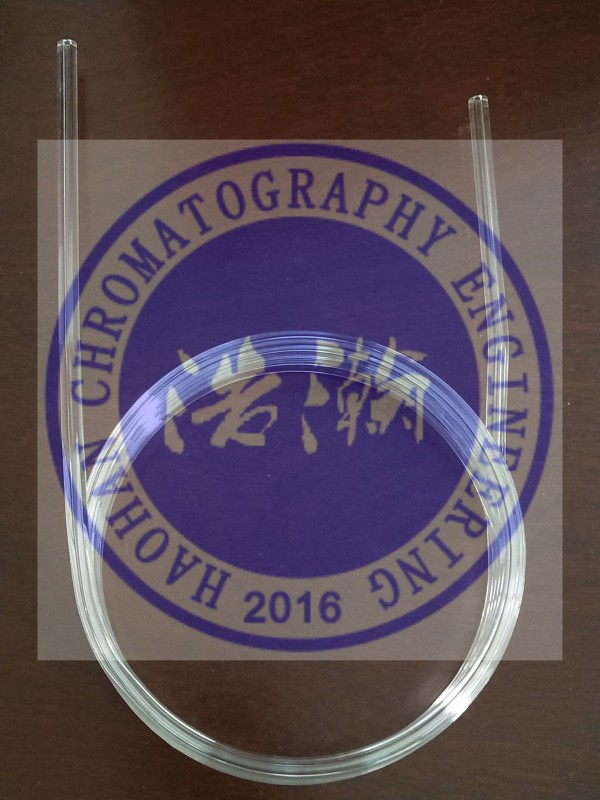
| 产品名称: |
5%聚乙二醇20m/Chromosorb T 玻璃柱测发动机油中乙二醇 |
| 产品型号: |
5%聚乙二醇20m/Chromosorb T |
| 品牌: |
1941 |
| 产品数量: |
|
| 产品单价: |
面议 |
| 日期: |
2024-04-14 |
5%聚乙二醇20m/Chromosorb T 玻璃柱测发动机油中乙二醇的详细资料
玻璃柱测发动机油中乙二醇
玻璃柱测发动机油中乙二醇 详细信息:
名称:玻璃柱
固定液:5%的聚乙二醇20M
载体:Chromosorb T 30/60目
规格:1.2m*6.4mm(外径)
型号:5%peg-20M/Chromosorb T
应用: 在用发动机油中微量乙二醇的测定气相色谱法
用于给发动机冷却降温的发动机冷却液的主要成分为水和乙二醇,添加乙二醇主要是防止在寒冷的冬季停车时因冷却液结冰而胀裂散热器,冻坏发动机气缸或气缸盖,同时避免夏季温度较高时发动机出现开锅现象。如果在发动机运行过程中冷却液出现泄漏并进入发动机,会削弱发动机油的润滑能力;同时,乙二醇会促进发动机润滑油漆膜和沉积物的生成,增大磨损。通过测试在用发动机油中乙二醇的含量,监测乙二醇的浓度,可以预警冷却液的泄漏程度,避免因乙二醇泄漏积累而损害发动机,具有较强的应用价值。
ASTM D7922-14的标准采用苯硼酸作为衍生试剂,将样品中的乙二醇衍生后通过顶空进样器导入气相色谱进行定量分析,这种方法对于设备配置要求和衍生试剂成本均较高,不利于推广。现有技术中还有采用正己烷稀释发动机油油样,然后用水萃取溶液中的乙二醇,后采用气相色谱法来测定乙二醇的含量,这种方法中所采用的试剂正己烷毒性较大,且实验过程较繁琐,也不利于推广应用。
浩瀚色谱(山东)应用技术开发有限公司研究出一种新的发动机油中乙二醇含量的测定方法,以解决现有技术中的问题。
玻璃柱测发动机油中乙二醇 测试谱图:




Glass column measuring ethylene glycol in engine oil
Measuring ethylene glycol in engine oil with glass column Details:
Name: Glass Column
Fixative: 5% polyethylene glycol 20M
Carrier: Chromosorb T 30/60 mesh
Specification: 1.2m*6.4mm (outer diameter)
Model: 5%peg-20M/Chromosorb T
Application: Determination of trace glycol in engine oil by gas chromatography
The main components of the engine coolant used to cool the engine are water and ethylene glycol. The addition of ethylene glycol is mainly to prevent the radiator from expanding and cracking due to the freezing of the coolant during the parking in the cold winter, and freezing the engine cylinder or cylinder. Cover, and at the same time avoid the engine boiling phenomenon when the temperature is high in summer. If the coolant leaks and enters the engine during engine operation, it will weaken the lubricating ability of the engine oil; at the same time, glycol will promote the generation of engine lubricating paint film and deposits, increasing wear. By testing the content of ethylene glycol in the engine oil in use and monitoring the concentration of ethylene glycol, the degree of leakage of the coolant can be warned to avoid damage to the engine due to accumulation of ethylene glycol leakage, which has strong application value.
The ASTM D7922-14 standard uses phenylboronic acid as the derivatization reagent. After derivatizing the ethylene glycol in the sample, it is introduced into the gas chromatography through the headspace sampler for quantitative analysis. This method has high equipment configuration requirements and high cost of derivatization reagents. Not conducive to promotion. The prior art also uses n-hexane to dilute the engine oil sample, then extracts the ethylene glycol in the solution with water, and finally uses gas chromatography to determine the content of ethylene glycol. The reagent used in this method is more toxic than n-hexane. Large, and the experimental process is cumbersome, and it is not conducive to popularization and application.
Haohan Chromatography (Shandong) Applied Technology Development Co., Ltd. has developed a new method for the determination of glycol content in engine oil to solve the problems in the existing technology.
Test spectrum of ethylene glycol in engine oil measured by glass column:





